
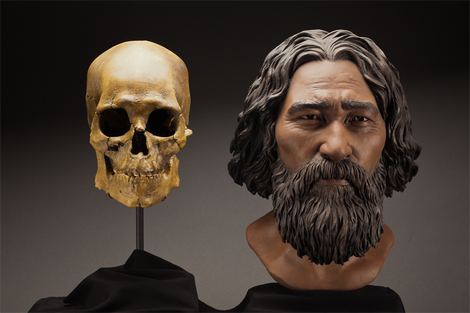
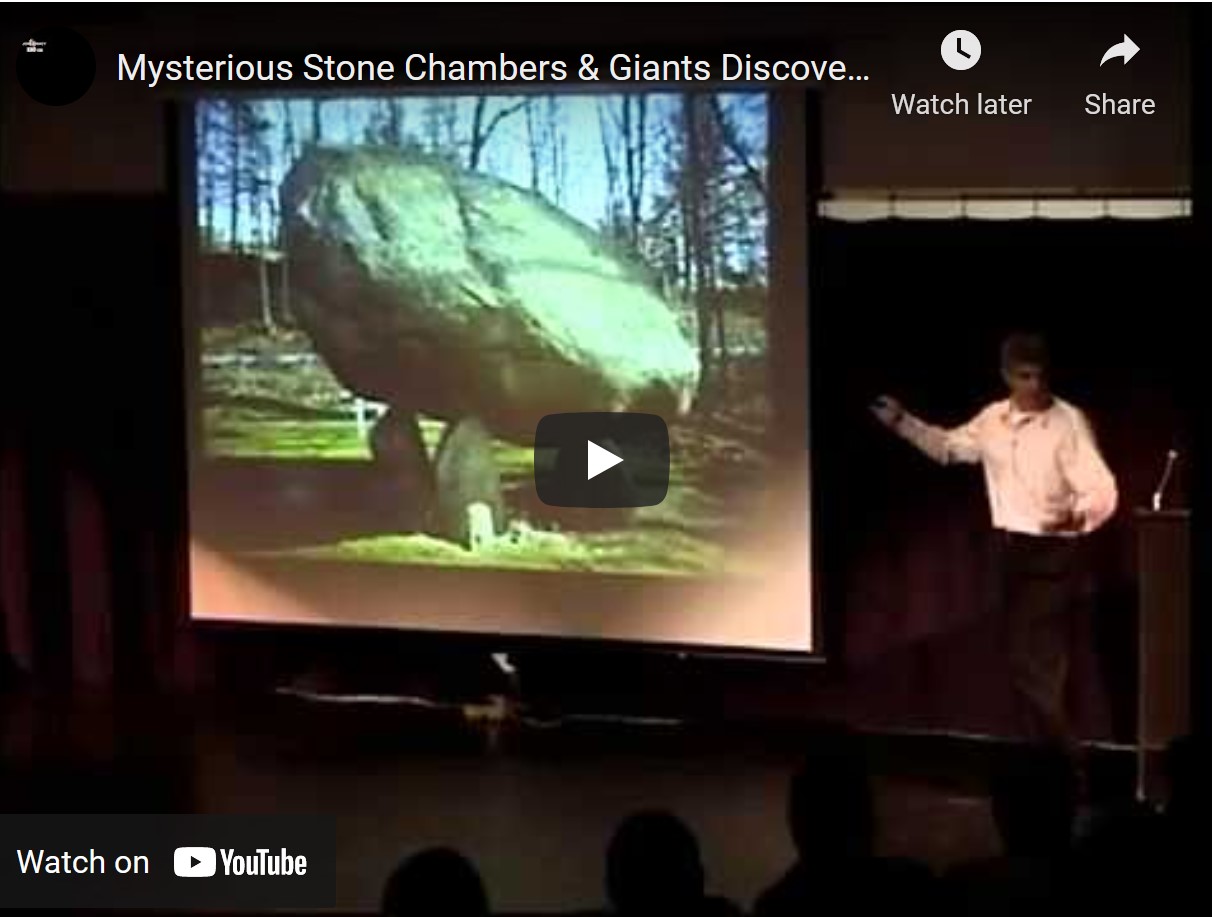
Mysterious Stone Chambers & Giants Discovered in New England- Jim Vieira
Strange stone tunnels and chambers, perhaps pre-historic, have been found in Leyden, Wendell, Pelham, Montague, New Salem, Whitingham, VT and throughout New England. Who built these structures and when? Why?
Ashfield stonemason Jim Vieira has been exploring local stone chambers for years as a member of the Northeast Antiquities Research Association, which has studied these structures for 60 years. He describes the stone ceremonial landscape of New England, carbon-dating evidence and historical texts.
His slides document local sites and others in New England, and he discusses what they represent and who may have built them.

Ancient Roman shipwreck off the coast of Rio De Janeiro Brazil.
The Ancient Roman Shipwreck In Brazil
In 1982, a marine archaeologist discovered what appeared to be the remains of an ancient Roman ship off the coast of Rio De Janeiro. Brazilian officials responded by enacting an underwater ban, ending any further study of the site. Could this be evidence of a lost Roman presence in the Americas? Sources and more: https://bit.ly/2pJZ2hY
The Globalists control the media and education do not like to reveal to Caucasian people went to America long before the Vikings.
There is a growing amount of evidence and the following videos and information will hopefully, tingle your investigative minds to do more research and find the facts.
A book written by Barry Fell called, 'America B.C,' Ancient Settlers in the New World. Barry Fell (born June 6, 1917, died April 21, 1994) was a professor of invertebrate zoology at the Harvard Museum. He authored: 'America BC Ancient Settlers in the New World.' It was in this book I first came across this revealing and interesting part of history. Further reading of Barry Fell, go Here to read his Equinox Project which he founded and more on him on Wikipedia Here

Dr. Dennis J. Stanford speaks at the Emerson Center Stanford is director of the Smithsonian's Paleoindian/Paleoecology Program and Head of the Division of Archaeology. Stanford and Smithsonian.
Solutreans: The First Americans Were White Europeans DNA proof
Theory of Phoenician discovery of the Americas
Arabic Numbers, Phoenician Alphabet, and a Bar B Que in New England
Phonecians the ancestors of the people Lebanon discover a colony in Salem new Hampshire around 1200BC.
FINALLY: DNA Results Of The Paracas Elongated Skulls Of Peru: Part 1
Another person who explored this topic was Thor Heyerdahl (Ethnographer) who conducted personal experiments and then wrote books about his experiences. In The RA Expeditions, he had a reed ship built in Egypt and sailed it across to the Americas using the currents and the wind.
I have three of his books; 'The RA Expeditions', 'The Tigris Expedition' and 'The Kon-Tiki Expedition' (set in the Pacific), all of which are his personal accounts sailing in these regions and are truly fascinating reads.
The Tangaroa Expedition (The Kon-Tiki Expedition) 2012 Documentary
Ogam alphabets and Runic writings have been found in the United States. Similar writings and language have also been found in historical sites around the Middle East and Europe.
New archaeological evidence suggests that America was first discovered by Stone Age people from Europe – 10,000 years before the Siberian-originating ancestors of the American Indians set foot in the New World. A remarkable series of several dozen European-style stone tools, dating back between 19,000 and 26,000 years, have been discovered at six locations along the US east coast.
The First Americans - ROBERT SEPEHR
Solutreans Are Indigenous Americans
Solutreans:First Americans:The Ice-Age Discovery of the Americas ...
Finding America - Seeking New Paleolithic Paradigms
Solutrean-Clovis Connection in American Colonization
Solutreans: The first Americans - 1 of 9
Skeletons have been found in the United States which have been identified by experts as being Caucasian and NOT Native American Indian. Probably the most famous of these skeletons is known as the Kennewick Man. Carbon dating on the skeletal remains show that he is over 9000 years old and he is most famous due to the lengthy and costly legal debacle over his ownership. This ownership debate is still ongoing in 2016.
The skeletal remains of the Kennewick Man are currently residing in the Burke museum, however, due to legal proceedings, extensive testing proving his background cannot be completed. There is a very informative article on the history of the Kennewick man in Smithsonian Magazine which you can read online.
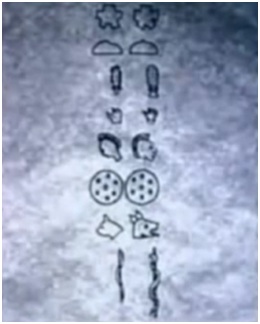 Genome data on the Kennewick Man has just recently been released showing that his most distant relations are Native American Indians but I am sure the debate is still not over.
Genome data on the Kennewick Man has just recently been released showing that his most distant relations are Native American Indians but I am sure the debate is still not over.
More information on the Kennewick Man can also be found on this website.
Further evidence shows during the Ice Age winter periods that the ice sheet continued from Europe right across to the eastern side of the United States. It is hypothesized that Europeans made their way across the sheet using skin canoes similar to those of the Eskimos in North America and migrated over a lengthy trip. They did this by staying on the ice at night and hunting seal for food as they made their way to America.
Spear points have been found in America which are the same design previously found in Europe from the Solutrean culture. Clovis technology, made by the Indians in North America, were very different and they did not make this Solutrean style of spear point. There are people who say that Europeans arrived in America long before the Indians did and when the Indians arrived, the European population declined to eventual extinction in this region due to interracial marriage and conflict.
Solutreans: Extraordinary Ice Age European people
Solutreans: Extraordinary Ice Age European people
Solutreans: Extraordinary Ice Age European people
Solutreans: Extraordinary Ice Age European people
Solutreans: Extraordinary Ice Age European people
Related Links & Videos
Kennewick Man & Europeans In Ancient America PBS NOVA Full Docu
Slight flaw in above video - Maize, (corn), is native to the Americas and did not arrive in the "old world" until the Spanish brought it back to Europe in the 1400s. So much for authentic stage sets.
White People came to Ancient America
The Ancient History of the Vikings 1
The crap history we have been fed of "Columbus discovering America" is CRAP History.....the VIKINGS have been 100% archaeologically PROVEN to landed and settled in Canada, the Canadian Arctic, Greenland and Iceland over 400 YEARS before the voyage of Columbus to.....Puerto Rico....! So you can cancel that fake news chapter from ALL history books.........and it is also a fact that Chinese artefacts have been found in Mexico and California.....some 650 years before Columbus ran smack dab into Puerto Rico......more to follow.....and there has just been archaeological evidence of early settlement in Alaska and northern British Columbia Canada.....some 1600 years before Columbus stuck his sea-sick nose into Puerto Rico...
.
Kennewick Man - Were Whites in North America B.C.?
The First Americans - Part 1 - Kennewick Man
White Native Americans: Kennewick Man Skeleton (Discovery Channel)
Kennewick Man - Clovis/Solutrean - Haplogroup X
Pre-Columbus American Artifacts
Who Really Discovered America?
Caucasians in pre-Columbian America
American Aztec and European Minoan contact long before Columbus
The Windover Archeological Site is an Early Archaic (6000 to 5000 BC) archaeological site where skeletal remains of 168 individuals were found buried in the peat at the bottom of the pond. The skeletons were well preserved because of the characteristics of peat. In addition, remarkably well-preserved brain tissue has been recovered from many skulls from the site. DNA from the brain tissue has been sequenced.
DNA Results of Ancient Native American Mummies - ROBERT SEPEHR
Prince Madoc from Ireland arrived in America in the 6th century

l Meet the man behind The Brendan Voyage
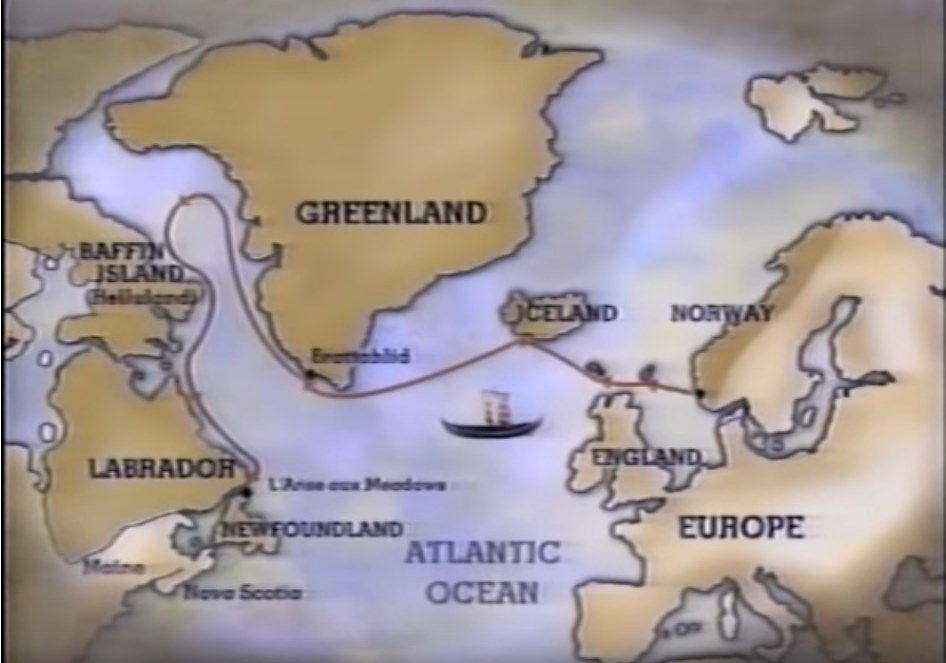
THE VIKINGS The Vinland Map Mystery Full HD Documentary 2015
The Vikings and the Vinland Map mystery showing Europe, Iceland, Greenland and north American east coast.
There is a map in the vatican of Girolamo Verrazanno's voyage with Giovanni Verazanno to the east coast of america circa 1524 to 1529. This map should be compared to the Vinland map. But try to obtain this from the Vatican?
Vikings lived in Greenland
The west coast of Greenland was the site of a thriving Viking colony for hundreds of years. Originally settled by explorers who had bravely sailed across the treacherous North Atlantic from their homes in Scandinavia, the Greenland outpost grew into a farming community of thousands. And then something went terribly wrong. Visitors in the 1400s reported that the inhabitants had simply vanished, leaving no bodies and few clues about what could have happened.

Reconstruction of Viking settlement in North American
An early documentary on the Vikings trips to North America.
The Lost Vikings Vikings In America
27/10/2016p
9/11/2021


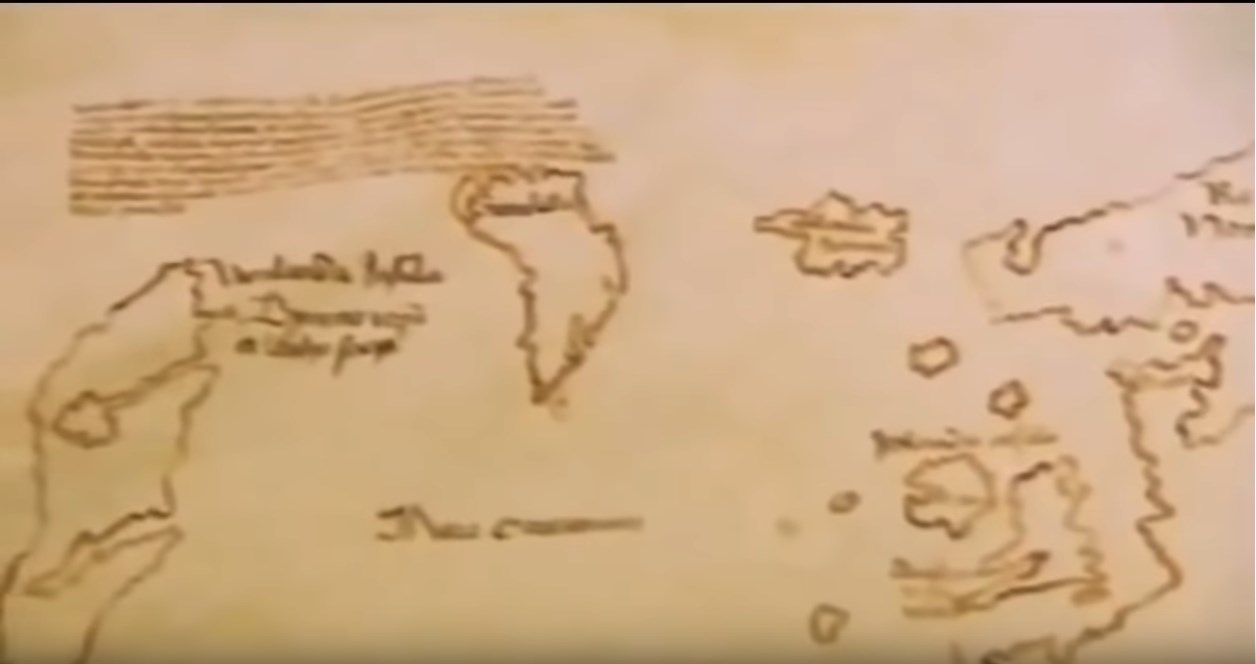
Laura Steinberg
Why Do Archeologists Lie? New England’s Ancient Stone Chambers Revealed
MARCH 11, 2014 BY 21WIRE 33 COMMENTS
21st Century Wire says…
Why do establishment-funded archeologists and academics still pretend and cover-up evidence of ancient and highly advanced civilisations, particularly those located in North America?
IMAGE: Aerial view of one of many mysterious stone structures in New England, Northeast United States.
There are hundreds of elaborate, man-made stone structures throughout New England and upstate New York in the northeast of the US, with many structures found in remote areas – far from any recognised ‘human settlements’.
So much is being hidden, but why? Watch this excellent presentation on what has been there right below our noses in the US…
Mysterious Stone Chambers & Giants Discovered in New England- Jim Vieira
conspiracykingdotcom Published on Jan 21, 2013
Strange stone tunnels and chambers, perhaps pre-historic, have been found in Leyden, Wendell, Pelham, Montague, New Salem, Whitingham, VT and throughout New England. Who built these structures and when? Why?
Ashfield stonemason Jim Vieira has been exploring local stone chambers for years as a member of the Northeast Antiquities Research Association, which has studied these structures for 60 years. He describes the stone ceremonial landscape of New England, carbon-dating evidence and historical texts.
His slides document local sites and others in New England, and he discusses what they represent and who may have built them.
http://www.youtube.com/watch?v=9-4sI34aIZ0